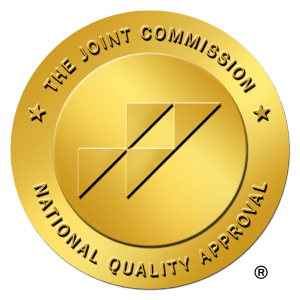
When the days grow shorter and the temperatures drop, many people experience more than just a change in weather. Seasonal depression, also known as Seasonal Affective Disorder (SAD), affects millions of Americans each year, and for those struggling with substance use disorders, this seasonal shift can create a particularly dangerous combination. Understanding the relationship between seasonal depression and addiction is crucial for anyone navigating recovery or supporting a loved one through these challenges.
Understanding Seasonal Depression
Seasonal depression is a form of depression that follows a seasonal pattern, typically emerging during the fall and winter months when daylight hours decrease. This condition goes beyond the occasional “winter blues” and represents a serious mental health challenge that can significantly impact daily functioning.
According to the National Institute of Mental Health, approximately 5% of adults in the United States experience seasonal depression, with symptoms lasting about 40% of the year. The condition is characterized by persistent feelings of sadness, loss of interest in activities, changes in sleep patterns, appetite fluctuations, and decreased energy levels.
The biological mechanisms behind seasonal depression involve disruptions to the body’s circadian rhythm caused by reduced sunlight exposure. This affects serotonin levels—a neurotransmitter that regulates mood—and melatonin production, which influences sleep patterns. For individuals already vulnerable due to substance use disorders, these neurochemical changes can intensify cravings and compromise recovery efforts.
The Dangerous Intersection of Seasonal Depression and Addiction
The relationship between seasonal depression and substance use disorders creates a complex clinical picture that requires specialized treatment approaches. Many individuals turn to drugs or alcohol as a form of self-medication, attempting to alleviate the emotional pain and fatigue associated with seasonal mood changes.
Research from the Substance Abuse and Mental Health Services Administration (SAMHSA) indicates that individuals with substance use disorders are nearly twice as likely to experience mood disorders, including seasonal depression, compared to the general population. This co-occurrence, known as dual diagnosis or co-occurring disorders, presents unique treatment challenges that require integrated care addressing both conditions simultaneously.
The cyclical nature of seasonal depression can be particularly problematic for those in recovery. As symptoms emerge each fall and winter, individuals may experience:
- Increased Relapse Risk: The emotional distress of seasonal depression can weaken resolve and make sobriety feel more difficult to maintain. The fatigue and hopelessness associated with SAD can diminish motivation for recovery activities like attending support groups or therapy sessions.
- Amplified Withdrawal Symptoms: For those newly sober, seasonal depression can intensify the emotional aspects of withdrawal, making the early stages of recovery even more challenging.
- Social Isolation: Winter months naturally lead to less social interaction, and when combined with depression, this isolation can trigger substance use as individuals seek comfort or escape.
- Disrupted Sleep Patterns: Both seasonal depression and substance withdrawal affect sleep quality, creating a compounding effect that impacts overall mental health and recovery stability.
Recognizing the Warning Signs
Early identification of seasonal depression symptoms is essential for preventing relapse and maintaining recovery momentum. Family members, friends, and individuals in recovery should watch for these warning signs:
- Persistent sad, anxious, or “empty” feelings that coincide with seasonal changes
- Loss of interest in activities once enjoyed, including recovery-related activities
- Significant changes in sleep patterns—either sleeping too much or experiencing insomnia
- Appetite changes leading to weight gain or loss
- Difficulty concentrating or making decisions
- Increased irritability or restlessness
- Feelings of hopelessness or worthlessness
- Physical symptoms like headaches or digestive issues without clear medical causes
- Increased cravings for substances previously used
- Withdrawal from social connections and support systems
For individuals with a history of addiction, these symptoms may be accompanied by thoughts of using substances again or actual substance use. Recognizing these patterns early allows for timely intervention and support.
Evidence-Based Strategies for Managing Both Conditions
Successfully managing seasonal depression while maintaining recovery from addiction requires a comprehensive, integrated approach. The following strategies have proven effective:
Professional Treatment for Dual Diagnosis
Seeking specialized dual diagnosis treatment is the most effective approach for addressing co-occurring seasonal depression and substance use disorders. Integrated treatment programs address both conditions simultaneously rather than treating them as separate issues, recognizing that each condition influences the other.
Professional treatment may include individual therapy, group counseling, medication management when appropriate, and holistic approaches that support overall wellness. Mental health professionals experienced in treating co-occurring disorders can develop personalized treatment plans that account for the seasonal nature of symptoms and the complexities of addiction recovery.
Light Therapy
Light therapy, also known as phototherapy, has shown significant effectiveness in treating seasonal depression. This treatment involves exposure to a specialized light box that mimics natural outdoor light, helping regulate circadian rhythms and boost serotonin production. Most individuals use light therapy for 20-30 minutes each morning during fall and winter months.
For those in recovery, light therapy offers a non-pharmaceutical intervention that supports mental health without relying on potentially problematic medications. When combined with other treatment approaches, light therapy can substantially reduce seasonal depression symptoms.
Maintaining Structure and Routine
Establishing and maintaining a consistent daily routine provides stability during challenging seasonal periods. This includes:
- Regular sleep and wake times, even on weekends
- Scheduled meals at consistent times
- Planned exercise or physical activity
- Dedicated time for recovery activities like support group meetings
- Social connections with supportive friends and family
Structure helps counter the lethargy and disorganization that often accompany seasonal depression while reinforcing recovery behaviors that protect against relapse.
Physical Activity and Exercise
Regular physical activity has been shown to reduce symptoms of both depression and substance cravings. According to research published in the American Journal of Psychiatry, exercise can be as effective as medication for mild to moderate depression. During winter months, finding ways to stay active becomes particularly important.
Indoor exercise options, outdoor winter activities when weather permits, and movement-based practices like yoga can all contribute to improved mood and maintained sobriety. Exercise releases endorphins, improves sleep quality, and provides healthy coping mechanisms for stress management.
Nutritional Support
Seasonal depression often triggers cravings for carbohydrates and comfort foods, which can lead to unhealthy eating patterns. A balanced, nutritious diet supports both mental health and recovery by:
- Stabilizing blood sugar levels to prevent mood swings
- Providing essential nutrients that support neurotransmitter production
- Maintaining energy levels throughout the day
- Supporting overall physical health compromised by past substance use
Working with nutritionists familiar with addiction recovery can help develop eating plans that address both seasonal depression and recovery needs.
Building and Maintaining Support Networks
Social connection serves as a protective factor against both depression and relapse. During winter months when isolation increases, intentionally maintaining connections becomes crucial:
- Regular attendance at support group meetings
- Scheduled check-ins with sponsors or accountability partners
- Family therapy or couples counseling when appropriate
- Participation in recovery community activities
- Virtual connection options when in-person meetings aren’t feasible
These connections provide encouragement, accountability, and practical support during difficult periods.
Mindfulness and Stress Reduction Techniques
Mindfulness practices help individuals develop awareness of their thoughts and emotions without judgment, creating space between feelings and reactions. This skill proves particularly valuable when managing seasonal depression and addiction simultaneously.
Meditation, deep breathing exercises, progressive muscle relaxation, and mindfulness-based stress reduction programs all offer tools for managing difficult emotions without turning to substances. These practices strengthen emotional regulation skills essential for long-term recovery.
When to Seek Professional Help
While self-care strategies provide important support, professional intervention becomes necessary when:
- Symptoms of seasonal depression persist despite self-help efforts
- Thoughts of substance use intensify or actual use occurs
- Daily functioning becomes significantly impaired
- Suicidal thoughts or self-harm impulses emerge
- Previous coping strategies that worked well no longer provide relief
- Physical health declines due to depression or substance use
Seeking help isn’t a sign of weakness but rather a proactive step toward health and sustained recovery. Mental health and addiction treatment professionals have specialized training to address the complex interplay between seasonal depression and substance use disorders.
The Path Forward: Integrated Treatment at Grata Health
Managing seasonal depression while maintaining recovery from addiction requires specialized care that addresses both conditions as interconnected aspects of overall wellness. At Grata Health, we understand that successful treatment must consider the whole person, including how seasonal patterns affect mental health and recovery stability.
Our dual diagnosis treatment program in Ventura County provides comprehensive, integrated care for individuals facing co-occurring seasonal depression and substance use disorders. Through evidence-based therapies, personalized treatment planning, and compassionate support, we help clients develop the skills and strategies needed to maintain recovery year-round, regardless of seasonal challenges.
If you or a loved one is struggling with both seasonal depression and addiction, don’t wait for symptoms to worsen. The intersection of these conditions requires professional guidance and specialized treatment approaches. Contact Grata Health today to learn more about our dual diagnosis treatment programs and how we can support your journey toward lasting wellness and recovery. Our experienced admissions team is available anytime to answer questions and help you take the first step toward healing.
